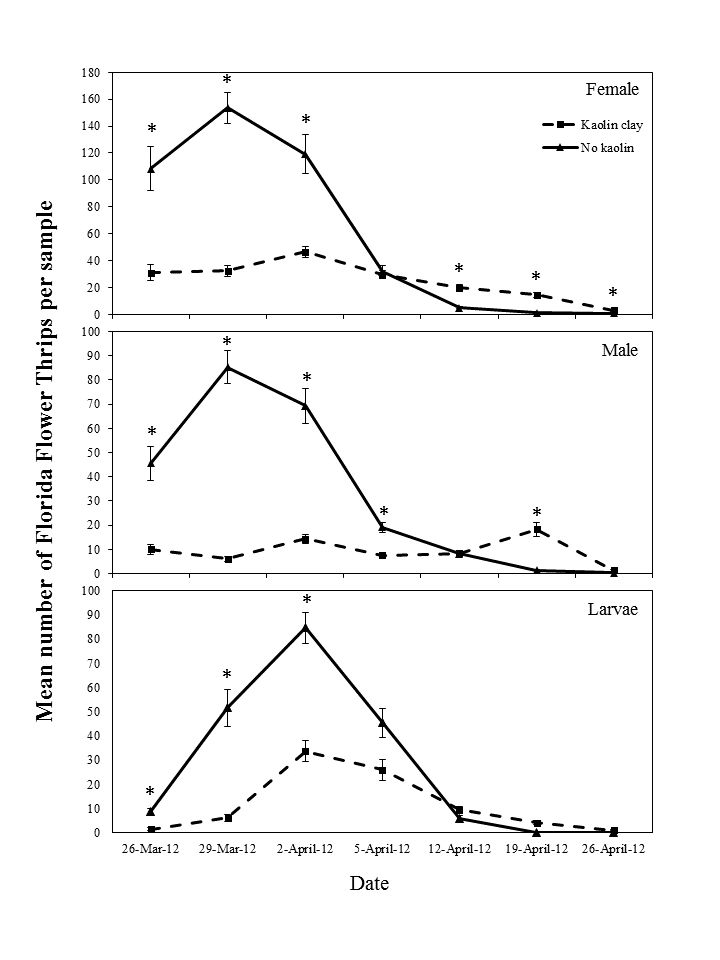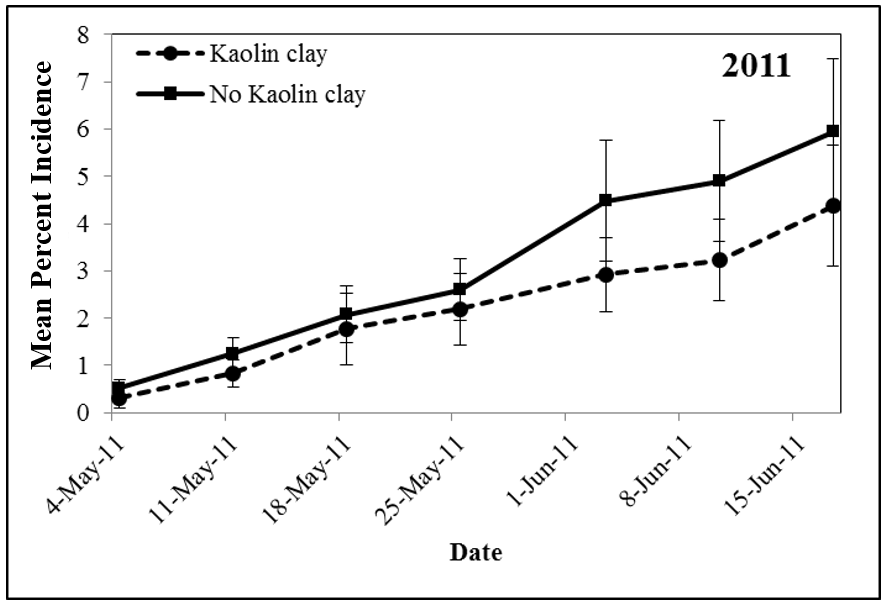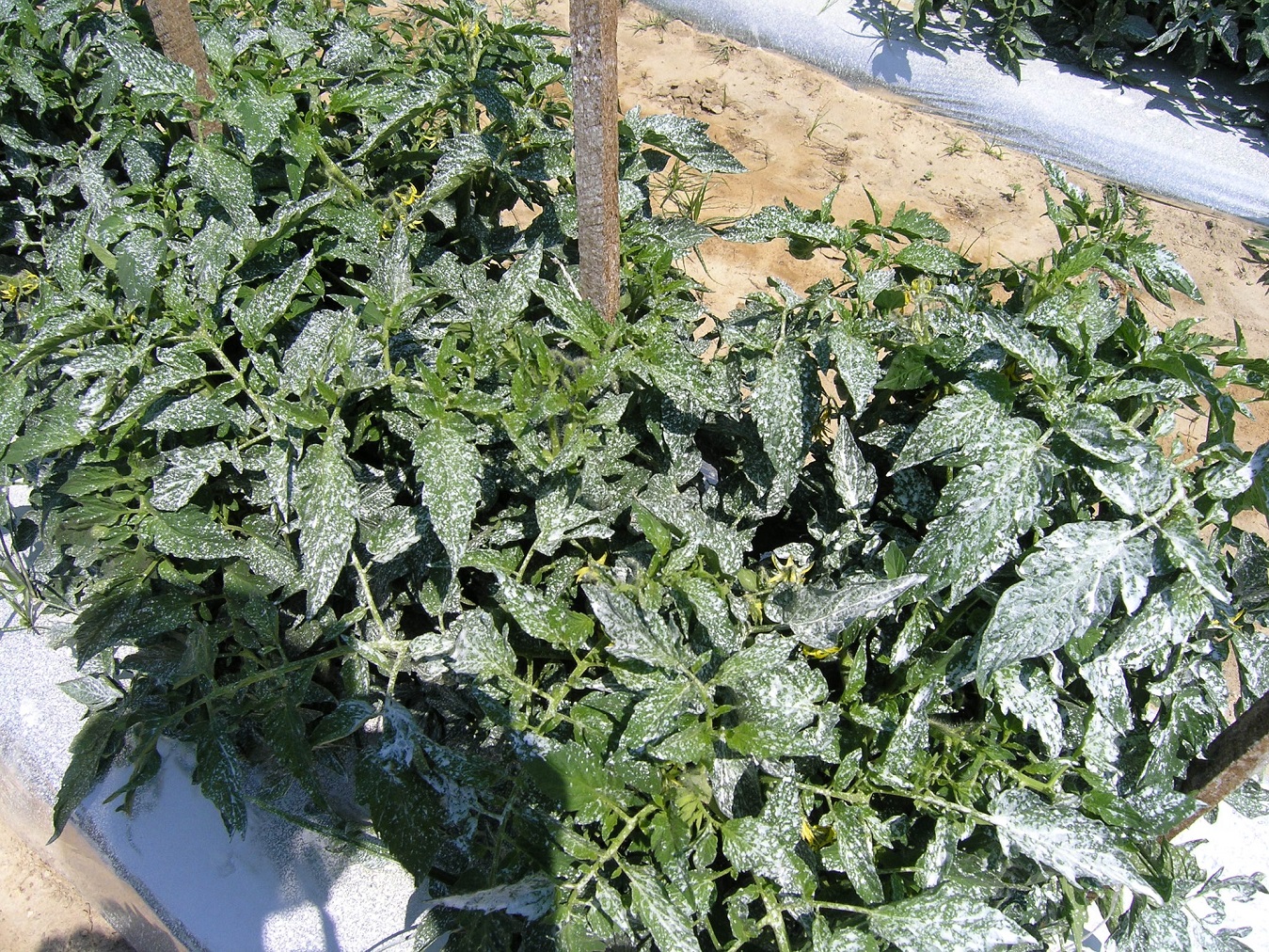Joe Funderburk, Professor of Entomology, North Florida Research and Education Center, Quincy
Kaolin (a naturally occurring mined mineral) is an aluminosilicate particle film that is applied directly onto crops (Figure 1). The film acts through multiple modes of action to reduce insects and disease. Modes of action include interfering with feeding behavior and egg-laying, increasing mortality, concealing the crop visually or chemically, and lengthening developmental time. Kaolin has been shown to reduce populations of psyllids, aphids, thrips, and weevils, as well as reducing incidence of insect-vectored disease.
A team from the University of Florida, the USDA-ARS, and Glades Crop Care, Inc. is evaluating kaolin (Surround WP Engelhard Corp., Iselin, NJ) for control of thrips, thrips-vectored tomato spotted wilt virus, and other pests in Florida vegetables. Surround WP is 95% unprocessed mined mineral kaolin that is certified organic (Organic Materials Review Institute [OMRI]).
Kaolin in our trials has shown efficacy against western flower thrips (Frankliniella occidentalis), Florida flower thrips (F. bispinosa), and eastern flower thrips (F. tritici). Figure 2 shows numbers of Florida flower thrips adults and larvae in pepper flowers where kaolin was applied weekly in an experiment conducted in Fort Pierce, Florida. Minute pirate bugs are the major predator of thrips in pepper, and natural populations resulted in control of thrips by early April. The kaolin had some negative impacts on minute pirate bugs, and this is the reason why there were slightly more thrips in kaolin-treated pepper in mid- to late April.

Figure 2. Florida flower thrips numbers in pepper flowers where kaolin was applied versus an untreated control (adapted from Tyler-Julian et al. 2014. Environmental Entomology, in press; * indicates dates with significant difference).
Other studies on tomatoes in Quincy, Florida have shown reductions in western flower thrips, and (as a result) the incidence of tomato spotted wilt virus (Figure 3). Research is currently be conducted on the use of kaolin for management of strawberry pests.

Figure 3. Mean percent incidence of Tomato spotted wilt virus in tomato plots in 2011 that did or did not receive applications of kaolin (adapted from Tyler-Julian et al. 2014. Acta Horticulturae, in press)
Kaolin has been shown to increase yield in some studies (including ours). Such increases are not always the result of pest control. In other studies, kaolin reduced fruit temperature and sunburn damage on tomatoes, and increased lycopene content and red coloration of the fruit. On peppers, kaolin reduced water stress, increased levels of chlorophyll, and increased light reflectance on leaves. Application of kaolin can be discontinued in time to reduce unacceptable levels on fruit, or it can be removed after harvest by washing.
For more information on thrips in vegetable crops:
Western Flower Thrips Develop Insecticide Resistance in North Florida
Managing Thrips and Tospoviruses in Tomato
Managing Thrips in Pepper and Eggplant
- Sampling for Flower Thrips and Their Key Predator in Vegetable Crops - September 27, 2019
- Adding Flowering Plants to Strawberry Fields to Enhance Pest Management and Biodiversity - May 11, 2018
- New Insect and Mite Control Guide for Florida Cotton Growers - September 8, 2017

